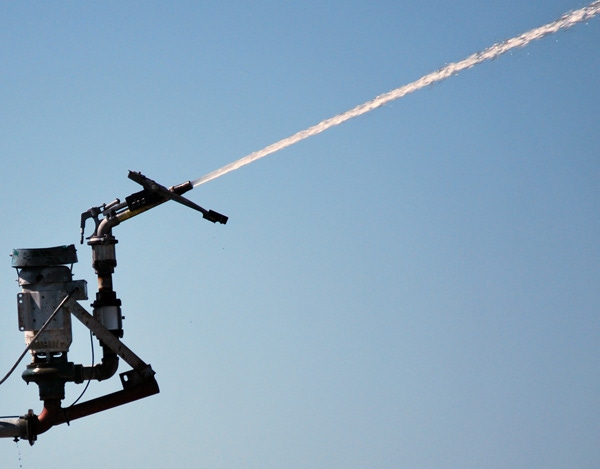April 1, 2015

Georgia has progressed quickly in terms of crop irrigation, while Alabama is playing catch-up, says Wesley Porter who has a unique insight into the similarities and the differences in the two states.
Porter has a joint appointment as irrigation specialist for the University of Georgia Extension Service and the Alabama Cooperative Extension System.

WESLEY PORTER, an irrigation specialist for the University of Georgia Extension Service and the Alabama Cooperative Extension System, is shown discussing soil moisture sensors at this past summer’s Central Alabama Crop Tour.
WESLEY PORTER, an irrigation specialist for the University of Georgia Extension Service and the Alabama Cooperative Extension System, is shown discussing soil moisture sensors at this past summer’s Central Alabama Crop Tour.“Looking at the two states, most of Georgia’s row-crop agriculture is in the southern portion of the state, while in Alabama, we have production both in the south and in the Tennessee Valley in the northern part of the state,” said Porter at the Alabama Corn and Wheat Short Course held this past December in Auburn.
Georgia ranks as No. 2 in U.S. cotton production and No. 1 in peanuts, he says, and while Alabama grows the same crops, its acreage isn’t as large.
“Water sources are definitely different,” notes Porter. “In southwest Georgia, growers have had easy access to water in shallow aquifers. That is true in southeast Alabama, but when we move out of that region, we have some challenges.”
“A lot of irrigation management tools have been developed in Georgia, and now there’s an extensive process of permitting in the state to get either well or surface water. Once you obtain the permit, depending on what region you’re in, you can get water fairly easily," he says.
A lot of crop consultants in Georgia, especially in the southwestern part of the state, offer irrigation management as a service to growers, says Porter.
“If you can pay someone to help you come in and do a good job of managing irrigation, it would be worth your while to do so.”
In 1970, there were 144,000 acres of irrigated land in Georgia and 87 center pivots. Now, the state has almost 1.2 million acres and 13,000 center pivots.
“There has been rapid expansion in Georgia, and we’re starting to see that in Alabama too.
Alabama has lagged behind some other states in irrigated acres partly because it’s more difficult to reach water sources in the state. The state legislature recently passed a law offering tax incentives for farmers who will establish or expand irrigation,” says Porter.
While there are signs that certain counties in Alabama have significantly increased their irrigation, Porter urges growers to use caution when making their decisions.
“Irrigation intensification, if improperly managed, can lead to some major issues in the near future, so we want to put in an infrastructure that ideally will be in place for a long time,” he says.
About the Author(s)
You May Also Like




